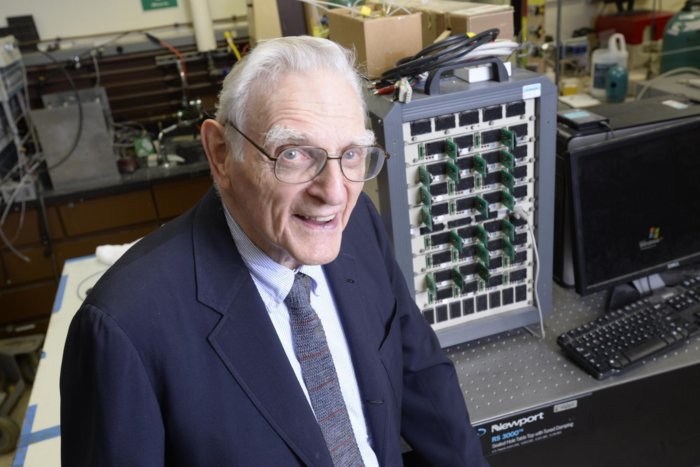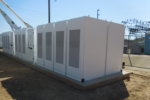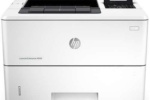The inventor of a new lithium-ion (Li-on) technology that is purported to be safer, faster-charging, and longer-lasting than today's rechargeable batteries responded to experts wary of his claim, saying new discoveries invite strong skepticism.
John Goodenough, 94, a professor in the Cockrell School of Engineering at the University of Texas at Austin and co-inventor of the original lithium-ion battery, this week said he demonstrated new battery cells that have at least three times as much energy density as today's Li-on batteries.
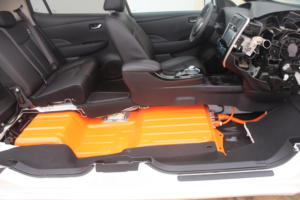 Creative Commons
Lic.
Creative Commons
Lic. The lithium-ion battery in a Nissan Leaf.
Goodenough invented the lithium-cobalt-oxide cathode in 1980. The battery was originally sold by Sony in 1991 and has become the leading battery technology, powering mobile devices and electric vehicles alike. An energy storage industry, lead by Tesla, is also using rechargeable lithium-ion battery technology.
In an article published Monday by Quartz, various energy experts took exception to Goodenough's claims, stating that they appear to defy the laws of thermodynamics.
"It's kind of like cold fusion. Here is an experiment that is unbelievable," Jeff Dahn, a leading researcher at Dalhousie University in Nova Scotia, was quoted as saying. "There could be a small possibility that it is right." Dahn's laboratory has a contract with Tesla.
"If anyone but Goodenough published this, I would be, well, it's hard to find a polite word," Daniel Steingart, a professor at Princeton University, told Quartz.
The skeptics appear mainly to take issue with how Goodenough's solid-state Li-on battery could produce energy when two different materials are needed to create an electrochemical reaction between two opposing battery electrodes. Goodenough's solid-state Li-on battery appears to contain only one electrochemical in the opposing electrodes -- metallic lithium or sodium.
In an email to Computerworld, Goodenough said "any new discovery invites strong skepticism."
"In this case, scientists wonder how it is possible to strip lithium from the anode and plate it on a cathode current collector to obtain a battery voltage since the voltage is the difference in the chemical potentials (Fermi energies) between the two metallic electrodes," Goodenough stated. "The answer is that if the lithium plated on the cathode current collector is thin enough for its reaction with the current collector to have its Fermi energy lowered to that of the current collector, the Fermi energy of the lithium anode is higher than that of the thin lithium plated on the cathode current collector."
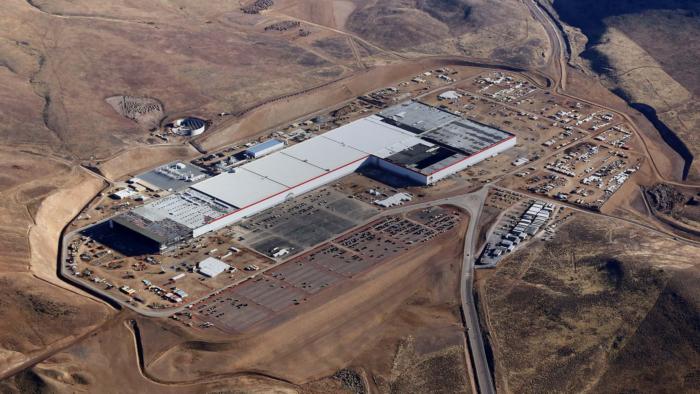 Tesla
Tesla
Tesla's Gigafactory outside Reno, Nev., began full production of lithium-ion batteries earlier this year.
Goodenough had noted in a statement released by the University of Texas that today's lithium-ion batteries are dangerous and can explode from overheating and short circuits. Lithium-ion batteries can can also catch fire when their electrolytes are exposed to oxygen. There have been a plethora of news reports on mobile devices with lithium-ion batteries that have exploded or caught fire.
Conventional lithium-ion batteries can be dangerous because they contain a flammable electrolyte under pressure. The batteries produce electricity as lithium ions move from the negative electrode to the positive electrode during discharge and back when charging.
"If a battery cell is charged too quickly, it can cause dendrites or 'metal whiskers' to form and cross through the liquid electrolytes, causing a short circuit that can lead to explosions and fires," Goodenough stated.
Instead of the flammable electrolytes, the University of Texas researchers' new battery technology relies on glass electrolytes that enable the use of an alkali-metal anode without the formation of dendrites.
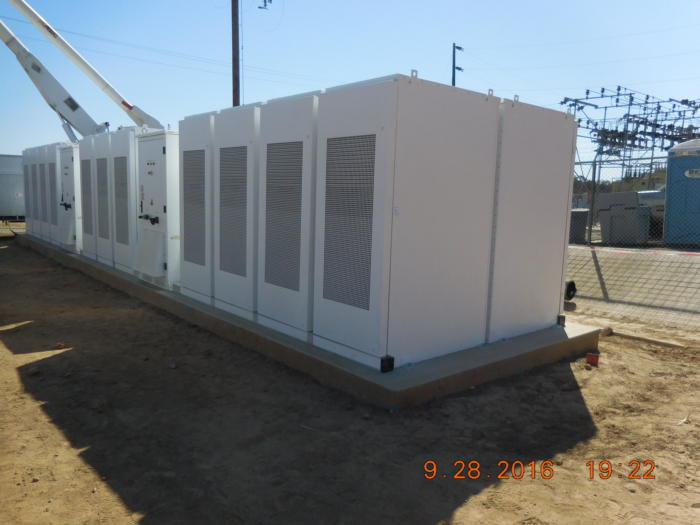 PG&E
PG&E
PG&E's new lithium-ion battery substation, located in Browns Valley, Calif., has 22 Tesla Powerpack units. Tesla is leading the industry in the deployment of lithium-ion batteries for power storage.
Because the solid-glass electrolytes can operate at -20 degrees Celsius, the new battery, if placed in a car, could perform well in subzero-degree weather. "This is the first all-solid-state battery cell that can operate under 60 degree Celsius," Goodenough stated in his paper.
The use of an alkali-metal anode (lithium, sodium or potassium) — which isn't possible with conventional batteries — increases the energy density of a cathode and delivers a long cycle life, the researchers' stated. In experiments, the researchers' cells have demonstrated more than 1,200 cycles with low cell resistance.
Goodenough and Cockrell School senior research fellow Maria Helena Braga, published their discovery in the peer-reviewed journal Energy & Environmental Science.
"At the University of Texas at Austin, the investigators have demonstrated that plating on a cathode current collector from a lithium anode can give a voltage greater than 3.0 volts," Goodenough stated in his email to Computerworld.
The discovery has the potential to revolutionize the rechargeable battery industry.
The use of Li-ion batteries continues to grow because prices have dropped due to economies of scale. Tesla and its development partner Panasonic are leaders in lithium-ion battery production.
By 2020, Tesla CEO Elon Musk said his company's "Gigafactory" outside Reno, Nev., will produce 35 gigawatts (a gigawatt is one billion watts) of battery capacity, with the objective of driving down the per-kilowatt hour (kWh) cost of battery packs by more than 30%. Tesla offers residential and commercial Li-ion battery systems.
Over the next decade, Li-ion batteries are on track to become the mainstream energy-storage technology, with more than 80% of global energy storage installations using it by 2025, according to research firm IHS. Half of all energy storage installations will occur behind the meter, driven by self-consumption and backup needs.
This story, "Inventor of new lithium-ion battery responds to skepticism" was originally published by Computerworld.

